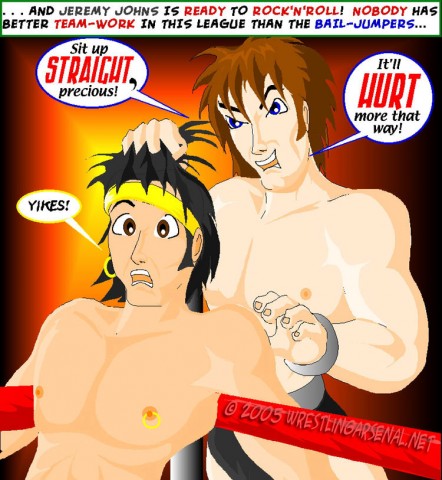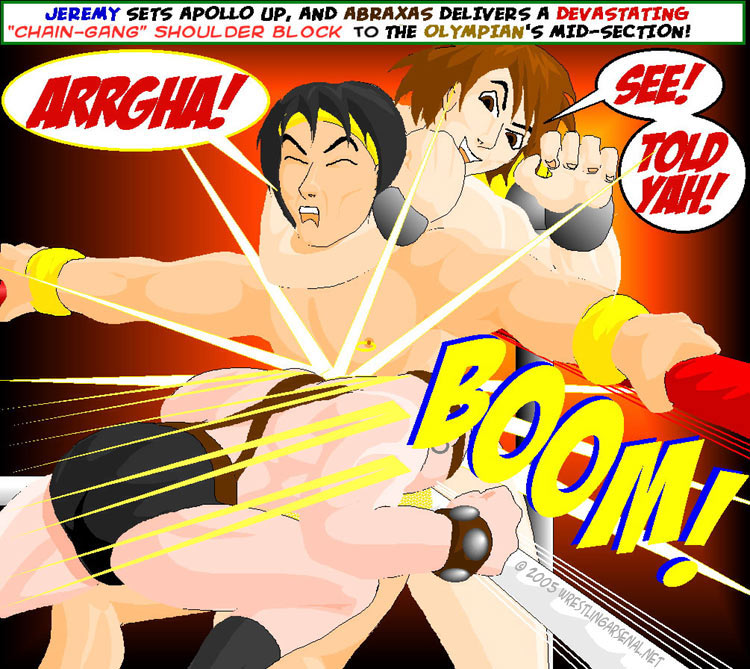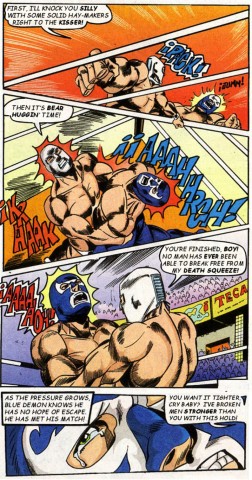 The nice thing about wrestling comic strips (and part of the reason I like them) is that the artist must provide us with some dialogue. He has to draw for us the little speech balloons and fill them with some compelling, enticing conversation. To tell the story, the cartoonist must include verbal exchanges, insults, and intimidating comments that are spoken during the match.
The nice thing about wrestling comic strips (and part of the reason I like them) is that the artist must provide us with some dialogue. He has to draw for us the little speech balloons and fill them with some compelling, enticing conversation. To tell the story, the cartoonist must include verbal exchanges, insults, and intimidating comments that are spoken during the match.
Wrestling fans like myself who have always yearned to hear what the opponents are saying to each other, to gain access to their whispered exchanges, can finally be in on the conversation — or at least the artist’s interpretation of the conversation.
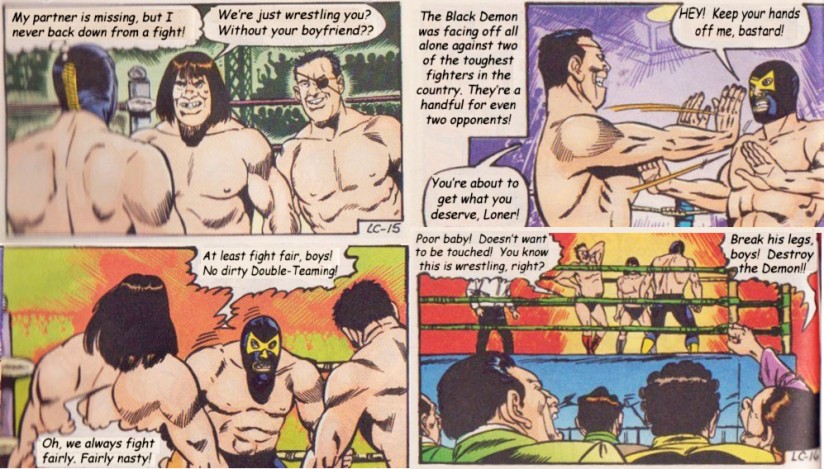
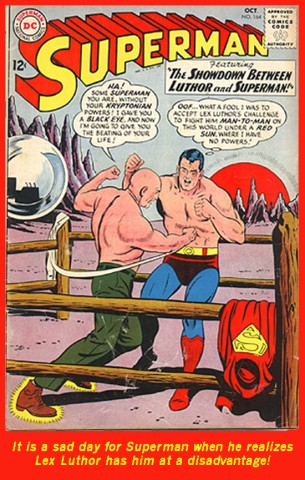 The artist reveals, through these speech balloons, a glimpse into his own private turn-ons and fetishes. What he depicts a wrestler saying is exactly what he wants to say to another man, or to hear spoken in his ear.
The artist reveals, through these speech balloons, a glimpse into his own private turn-ons and fetishes. What he depicts a wrestler saying is exactly what he wants to say to another man, or to hear spoken in his ear.
I suppose the reader enjoys gaining this insight into the cartoonist’s mindset because the reader, by understanding and agreeing with the cartoonist’s excitement level, forges a homosocial bond with the cartoonist. If the cartoonist created this scene and I enjoy it, we are in the same place.

